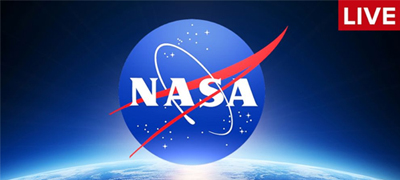|
|

|
  

3/30/2024
WT Staff
 SDWA Profiles
SDWA Profiles
Watervliet City Water
BWA lifted
Saturday, March 30, 2024 1124 am EDT
Drinking Water Advisories
City of Watervliet The City of Watervliet came under a BWA Monday, March 25 for reasons unspecified. According to the City, the Boil Water Advisory was been lifted 6:00 a.m. on Wednesday, March 27, 2024.
Drinking Water Facility Profile: City of Watervliet
EPA Status: No significant violations
Owner: local government
Location: Watervliet, NY
County: Albany
Watershed: Lower Hudson
Active Permit: NY0110127
System Type: community water system
Population Served: 9889
Source: surface water from the Watervliet Reservoir, located in the Town of Guilderland.
Reservoir watershed area: impoundment area 620 acres captures water from a 112 square mile basin
drained by the Normanís Kill, Bozen Kill and Black Creek
Capacity: 1.7 billion gallons of water
Treatment: (from 2022 Annual Water Quality Report) raw water from the Watervliet Reservoir flows to the Watervliet Water Treatment Plant. The treatment process consists of pre-oxidation using sodium permanganate for iron and manganese removal, coagulation using poly aluminum chloride to cause small particles to stick together when the water is mixed, making larger heavier particles; sedimentation allows the newly formed larger particles to settle out naturally; filtration removes smaller particles by trapping them in sand filters; zinc ortho- phosphate for corrosion control ; and final post chlorination to protect against contamination from harmful bacteria and other organisms.
From the Watervliet Reservoir Watershed Protection Study
Watervliet Reservoir has been used as a drinking water source for 90 years. The protection study cites the sources of potential contamination of the reservoir, including from pharmaceutical residues and personal care products, erosion and sedimentation, agriculture stormwater runoff non-point sources and more.
Contact: David Dressel tel 518-785-7082
Latest Compliance Inspection: Sanitary survey, complete, August 3, 2024 (State)
No deficiencies noted
The following information gathered from federal EPA pertains to the quarter ending September 30, 2023 (data last refreshed on EPA database Jan 9, 2024)
|
Non-compliant inspections
(of the previous 12 quarters)
|
with Significant Violations
(of the previous 12 quarters)
|
Informal
Enforcement Actions
(last 5 yrs)
|
Formal
Enforcement Actions
(last 5 years)
|
|
2 out of 12
|
0 out of 12
|
4
|
-
|
No Significant Violations
Maximum Contaminant Level Violation - Stage 2 Disinfectants and by-products of disinfection rule - noted April 1, 2022 to June 30, 2022 - measured at .82 mg/L resolved
*Note that drinking water information provided on this site is aggregated from the federal EPA database, state resources and local government sources where available.
EPA publishes violation and enforcement data quarterly, based on the inspection reports of the previous quarter. Water systems, states and EPA take up to three months to verify this data is accurate and complete.
Specific questions about your local water supply should be directed to the facility.
The EPA safe drinking water facilities data available to the public presents what is known to the government based upon the most recently available information for more than one million regulated facilities. EPA and states inspect a percentage of facilities each year, but many facilities, particularly smaller ones, may not have received a recent inspection. It is possible that facilities do have violations that have not yet been discovered, thus are shown as compliant in the system.
EPA cannot positively state that facilities without violations shown in ECHO are necessarily fully compliant with environmental laws. Additionally, some violations at smaller facilities do not need to be reported from the states to EPA. If ECHO shows a recent inspection and the facility is shown with no violations identified, users of the ECHO site can be more confident that the facility is in compliance with federal programs.
The compliance status of smaller facilities that have not had recent inspections or review by EPA or the states may be unknown or only available via state data systems.
|
|
|
|
All rights reserved 2025 - WTNY - This material may not be reproduced in whole or in part and may not be distributed,
publicly performed, proxy cached or otherwise used, except with express permission.
|
|